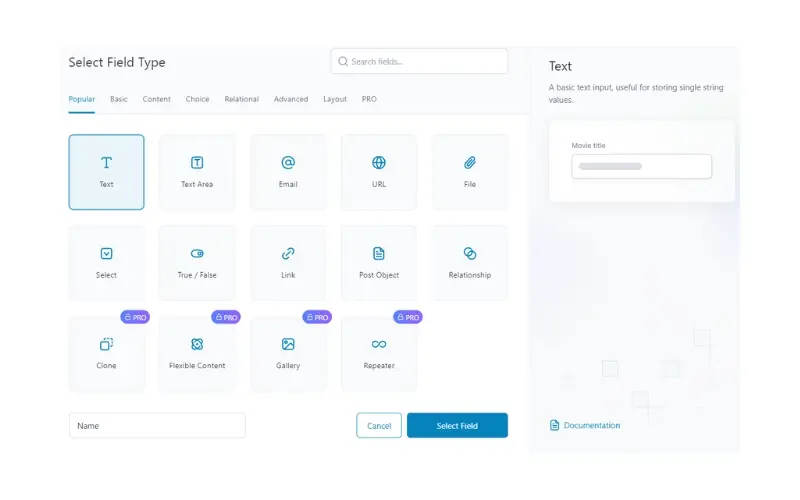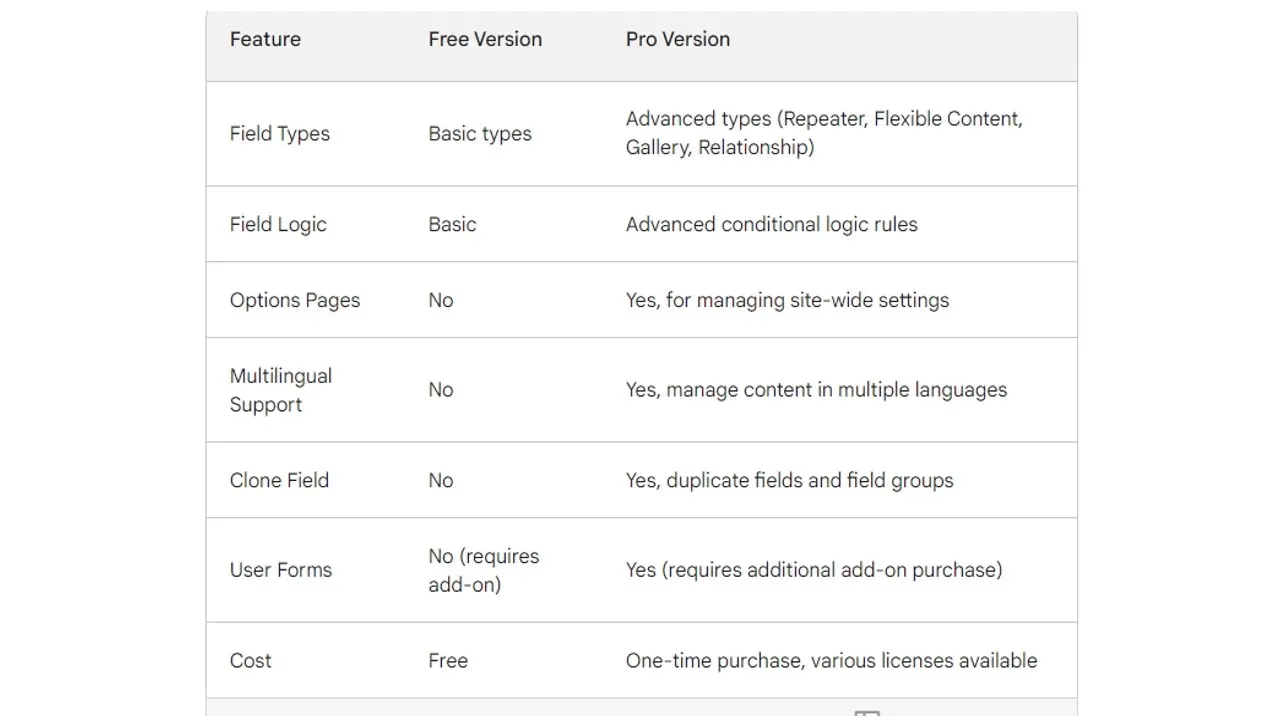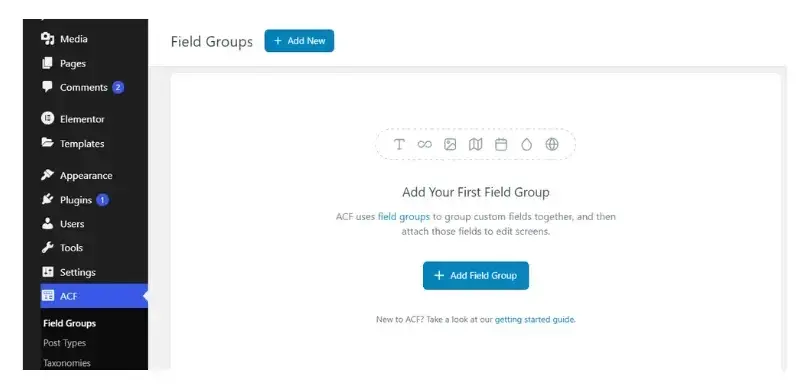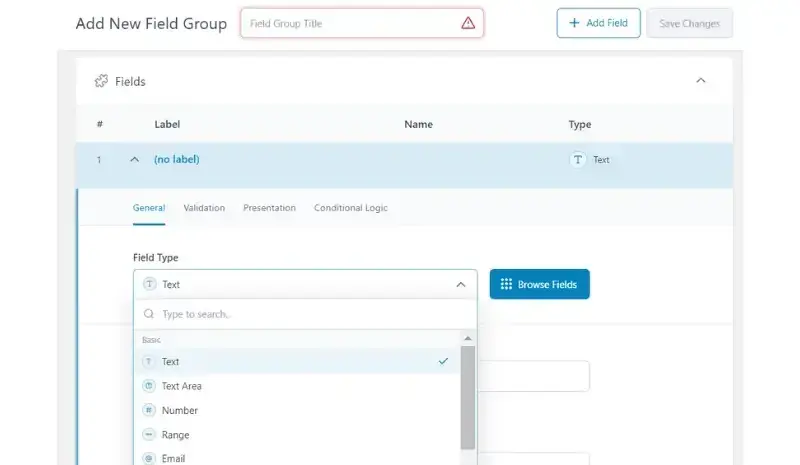Advanced Custom Fields (ACF) is a powerful WordPress plugin that elevates your website from a basic content management system (CMS) to a fully-fledged platform for managing diverse content. By introducing a user-friendly interface for adding custom fields, ACF empowers both developers and content creators to build dynamic and data-rich websites.
This comprehensive guide delves into the world of ACF in WordPress, exploring its functionalities, benefits, and practical applications. Whether you're a seasoned developer or a content manager seeking to unlock the potential of your website, this breakdown will equip you with the knowledge to leverage ACF effectively.
Unveiling Custom Fields: The Building Blocks of Dynamic Content
WordPress offers built-in post and page functionalities, but these often lack the flexibility to cater to unique content needs. This is where custom fields come into play. They act as additional data points you can attach to your posts, pages, or even custom post types (discussed later). These fields can hold various types of information, such as:
- Text
- Images
- Videos
- Dates
- Numbers
- Links
- Email addresses
- Radio buttons
- Checkboxes
- Wysiwyg editors (for rich text editing)
- Relationships (linking content together)
The default WordPress interface for managing custom fields is cumbersome and requires code. ACF bridges this gap by providing a visual interface for creating and managing these fields.
The ACF Advantage: Simplifying Content Creation and Management
ACF has many benefits that make content generation and website building easier. Here are some of the compelling reasons to use ACF in your WordPress website
Effortless Content Management: ACF empowers non-technical users, like content creators and editors, to manage complex content with ease. Its user-friendly interface eliminates the need for code, allowing it to add and update custom field data intuitively within the familiar WordPress editor. This fosters a smoother content creation workflow and reduces reliance on developers for minor content updates.
Enhanced Content Flexibility: The traditional post and page functionalities in WordPress are limited in terms of the data they can hold. ACF breaks these limitations by allowing you to define a vast array of custom fields. Text, images, videos, dates, links, and even more intricate data types can be captured and associated with your content. This flexibility enables you to build dynamic and data-rich websites that cater to your specific needs.
Streamlined Development Process: For developers, ACF acts as a time-saving tool. Instead of writing custom code for each unique content type, ACF provides a pre-built framework for managing custom fields. This simplifies development, reduces project turnaround times, and allows developers to focus on core functionalities and integrations.
Improved User Experience: ACF empowers you to create a user-friendly content editing experience. By using clear and concise field labels and a well-organized interface, content creators can effortlessly understand and manage the data associated with their posts, pages, or custom post types.
Dynamic Content Display: ACF doesn't just store custom field data; it empowers you to display it dynamically on your website. Using template tags or shortcodes (depending on the ACF version), you can control precisely where and how this custom data appears on your web pages. This allows for a high degree of customization in your website's content presentation.
Multilingual Support (Pro Version): If you're managing a website in multiple languages, the Pro version of ACF offers invaluable multilingual support. This allows you to create and manage content in different languages seamlessly, catering to a global audience effectively.
Future-Proofing Your Website: ACF is a well-established plugin with a strong development team and a large user base. By adopting ACF, you're investing in a future-proof solution for managing your website's content. As your website evolves and your content needs change, ACF's flexibility will ensure you can adapt and grow.
Unleashing the Power of ACF: Practical Applications
ACF's versatility extends to a multitude of website development scenarios. Here are some compelling use cases to illustrate its potential:
Building a Portfolio Website: Showcase your projects with custom fields for titles, descriptions, images, categories, and client testimonials.
Creating a Team Directory: Add custom fields to profiles for team member names, photos, roles, social media links, and short bios.
Developing an E-commerce Store: Utilize custom fields for product descriptions, specifications, pricing, stock availability, and related items.
Managing Events: Create custom fields for event dates, times, locations, speaker information, and registration forms.
Building a Knowledge Base: Implement custom fields for article categories, tags, difficulty levels, and estimated reading time.
These are just a few examples, and ACF's adaptability allows you to tailor your website's content management experience to fit your specific needs.
ACF Free vs. Pro: A Comprehensive Feature Breakdown
Advanced Custom Fields (ACF) offers a freemium model, catering to both basic and advanced website development needs. Here's a detailed comparison to help you decide which version best suits your project:

Core functionalities:
- Both Free and Pro versions allow you to create custom fields with various data types (text, image, WYSIWYG editor, etc.).
- You can define where these fields appear (posts, pages, custom post types, user profiles).
- Basic field logic is available in both versions, allowing you to show/hide fields conditionally based on user selections.
- Both offer shortcode functionality (Free version only) and template tag usage (both versions) for displaying custom data on your website.
Key Advantages of Pro Version:
Advanced Field Types: The Pro version unlocks a wider range of field types, including:
Repeater Fields: Create lists of repeatable content sections within a single field group (ideal for building complex layouts).
- Flexible Content Layouts: Drag-and-drop functionality to design dynamic page layouts with different content sections.
- Gallery Field: Effortlessly manage image and video galleries.
Relationship Field: Link content together, enabling connections between posts, pages, or custom post types.
Enhanced Field Logic: Pro offers more granular control over field logic. You can define complex rules for showing/hiding fields based on various criteria.
Options Pages: Create dedicated pages specifically for managing site-wide settings with custom fields.
Multilingual Support: Manage content in multiple languages with ease, a crucial feature for global websites.
Clone Field: Duplicate existing field groups or fields for faster development.
User Forms: Build custom user forms on the front-end of your website (requires additional add-on purchases).
Register custom post types and taxonomies: Speeding up the content modeling workflow without the need to touch code or use another plugin, right from the ACF UI,
Choosing the Right Version:
Free Version: Ideal for simple websites with basic custom field requirements. It's a good starting point for familiarizing yourself with ACF's core functionalities.
Pro Version: Best suited for websites with complex content structures, intricate layouts, or multilingual needs. It empowers developers to build feature-rich and dynamic websites.
Additional Considerations:
Cost: The Pro version requires a one-time purchase with various licensing options depending on the number of sites you need it for.
Learning Curve: While both versions are user-friendly, the Pro version introduces additional features that might require a steeper learning curve.

Getting Started with ACF: A Step-by-Step Guide
Ready to dive into the world of ACF? Here's a quick guide to get you started:
1. Installation: Navigate to the Plugins section in your WordPress dashboard, search for "Advanced Custom Fields," install, and activate the plugin.
2. Creating a Field Group:
- Click on the new "ACF" menu in your WordPress dashboard.
- Select "Add New" under the "Field Groups" submenu.
- Give your field group a descriptive title that reflects its purpose.
- In the "Location" section, define where this field group will be applied. You can choose specific post types, pages, custom post types, or even user profiles.

3. Adding Custom Fields:
- ACF offers a wide range of field types. Choose the one that best suits your needs from the "Add Field" dropdown menu. Options include text, image, WYSIWYG editor, checkbox, and many more.

Give your field a clear and concise label that content creators will understand.
Depending on the field type, you might have additional options to configure. For example, for an image field, you can specify allowed image sizes.
4. Organizing Your Fields:
You can add multiple fields to a single field group. Use the drag-and-drop functionality to arrange them in the desired order they'll appear in the edit screen.
5. Saving and Publishing:
Once you've configured your field group and added the desired fields, review everything and click the "Publish" button to make it available on your website.
Utilizing Custom Fields in Your Theme: Displaying the Data
Now that you have a field group with custom fields, it's time to display that data on your website. Here's how:
1. Using Template Tags:
- ACF provides specific template tags for each field type. You can reference these tags within your theme's templates (like page.php or single.php) to display the custom field data.
- The specific tags and their usage will depend on the chosen field type. You'll find detailed documentation on ACF's website to guide you through this process.
2. Shortcodes (Free Version Only):
The free version of ACF allows using shortcodes to display custom field data. This method offers less flexibility compared to template tags, but it's a good option for beginners.
Conclusion
In essence, ACF bridges the gap between the limitations of standard WordPress content management and the complexities of custom coding. It empowers both content creators and developers to streamline content management, craft dynamic websites, and deliver a superior user experience.
Remember, for displaying custom fields within custom post types you'll need to use slightly different approaches. With practice, you'll be able to create complex field groups, manage diverse content types, and craft dynamic and user-friendly websites using the power of ACF in WordPress.
Frequently Asked Questions
Are WordPress plugins free?
WordPress has loads of plugins you can install, some of them are free, but some of them you will need to pay for. You can learn how to use WordPress Plugins on our blog.
What is migrate in WordPress?
WordPress migration, simply put, is the process of moving a WordPress site from one server to another.
Is a WordPress blog free?
Anyone can download, use, customize, and edit the WordPress code as long as they release it under the GNU General Public License (GPL). Even though the software is free, you can end up paying for things like premium support and hosting.
What is metadata in WordPress?
Metadata, or meta tags, are small pieces of code embedded in a webpage's HTML that provide search engine bots with additional details about the page's content.

Audee Mirza is a graphic designer and WordPress developer at audeemirza.com who resides in Surabaya, Indonesia. She's also the author of Graphic Identity Blog, a professional logo designer, and often creates vector illustrations for clients and marketplaces. She enjoys good typography design and all kinds of animation.
View all posts by Audee Mirza




















